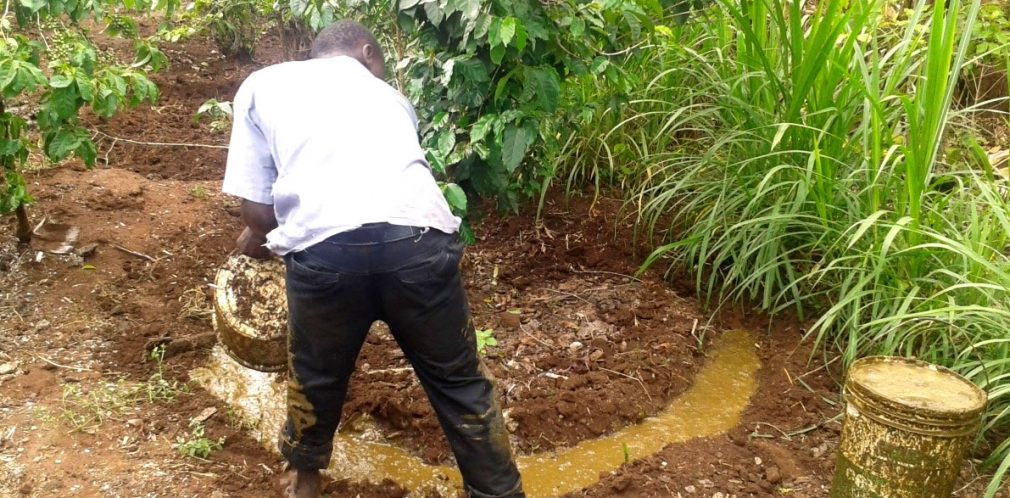Bioslurry is the liquid discharged at the biodigester outlet after gas has been tapped for energy. The biodigesters are fed daily with a mixture of fresh cowdung and water which is retained in the digester for a period of two to three months before being discharged as bioslurry. Some literature refer to it as digestate, sludge or simply slurry. Biolsurry is made up of 93% water and 7% dry matter. The dry matter contains Nitrogen (N), Phosphorus (P) and Potassium (K), which are the required nutrients for the healthy growing of crops.
Bioslurry also contains essential elements such as potassium, zinc, iron, manganese and copper among others. These nutrients are preserved during the fermentation process, bioslurry can be used as a ready-made manure. Bio-slurry is odourless, is pathogen free and does not attract flies; it repels termites and other pests that normally are attracted to raw dung. The process in the biogas digester kills organisms which can cause plant diseases and can be applied to vegetables or fruit crops. Bio-slurry is an excellent soil conditioner; it adds humus and enhances the soil’s capacity to retain water.
The quality of Bioslurry depends on the species and age of the animal from which the dung was drawn; quality of water used in mixing the dug; types of animal and feeding rate; use of urine/not along the dung; storage, treatment and application of the slurry.
There are many ways of using bioslurry on the farm, ranging from direct application as a liquid to solid application through drying or compositing. Over time, bioslurry utilization has evolved to include animal feeding, fishpond fertigation, seed coating among others.
Tags: Bioslurry, Bioslurry in Kenya

